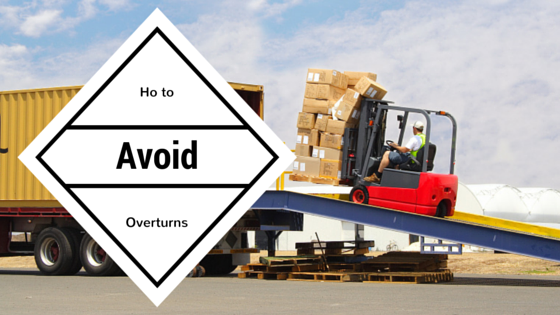How to Avoid Forklift Overturns
Forklifts are the cause of thousands of injuries every year in the U.S., and according to recent statistics, 100 workers are killed in forklift accidents every year. A quarter of forklift fatalities are due to forklift overturns. Even so, many workers are still unaware of the dangers associated with operating a forklift, and many of these injuries and fatalities could have been prevented by simple precautions, such as installing safeguards in the workplace and by setting a simple requirement for workers: proper training.
FORKLIFT OVERTURNS ARE ONE OF THE MAIN CAUSES OF DEATH
Carrying an excess load can cause a forklift to tip over, often crushing workers in the path of the overloaded material, or crushing the forklift operator if a roll-over protection system has not been put into place. Unfortunately, fatal injuries involving forklift overturns are all-too-common in the construction industry.
FORKLIFT OVERTURN VS TIPOVER
What’s the main difference with a forklift overturn vs tipover? How can a forklift be overturned? In a forklift overturn, the lift takes a turn that’s too sharp, or traveling too fast, and overturns. A tipover typically occurs when the maximum load capacity is exceeded, resulting in a tipover.
If your workers are unsure of a forklift overturn vs tipover, or how can a forklift be overturned, sign up for FLC training today. Our courses show your employees how to avoid things like forklift overturns and safe forklift operation.
HOW CAN WORKERS AVOID FORKLIFT TIP-OVERS?
Proper worker training and forklift certification is the first step for preventing injuries and fatalities involving forklifts. If employees are educated in how to operate a forklift and assess the environment for any safety hazards, they are much more likely to avoid a situation and prevent forklift accidents than those who are not trained. Workers should also know how to identify potential hazards:
– Understand the capacity of the forklift—what size and weight of a load can it handle?
– Assess and determine any unusual characteristics of a load—is it top-heavy, cylindrical, or awkward in any way?
– Inspect the condition of the forklift and know when something isn’t right—are the forks damaged or is there some other issue that could cause an accident?
– Assess the surrounding environment, looking at your location and where you are planning to go with the load—are there any obstacles, bumps, ramps, people, cross aisles, or narrow passageways to consider? Think about how can a forklift be overturned in the current environment. Are there any safety measures you can take to avoid forklift overturns?
Employers can help prevent forklift overturns and resulting injuries and fatalities with the following actions:
– Make sure all workers are trained and certified to operate a forklift
– Develop a written safety program for workers
– Inform operators of sit-down forklifts that they can be crushed by the overhead guard after jumping from an overturning forklift—operators should never jump from a tipping forklift, and should remain seated, hold on tight, and lean in the opposite direction.
– Inform operators of stand-up forklifts with rear-entry access to exit from the lift by stepping backward if it starts to tip over.
– Always utilize seatbelt restraints. In the event of a tipover, this will protect the driver from ejection and serious injury.
– Train operators to handle asymmetrical loads when their work involves this action.
COMPLETE COMPREHENSIVE FORKLIFT CERTIFICATION TODAY
The reason why forklift certification is so important is because all of the preventative steps listed above can be learned through training. ForkliftCertification.com offers an online program that takes only about one hour to complete, yet it is 100% OSHA compliant and teaches workers everything they need to know to operate a forklift safely (include knowing the difference between a forklift overturn vs tipover), inspect the equipment, perform maintenance checks, and assess the surrounding environment for safety hazards.
